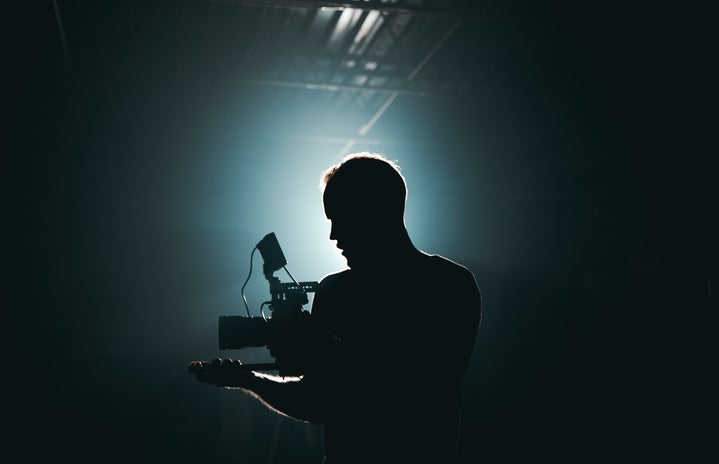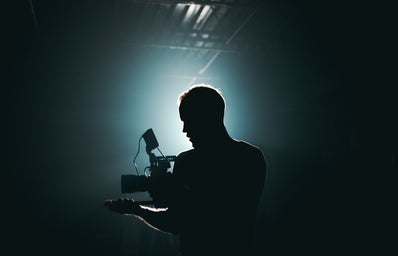If you have been recently scrolling through Tiktok, you’ve probably seen the “written by a man trend” on your For You Page. Under the hashtag #writtenbymen, female content creators mimic cliche, overly sexualised, or straight-up absurd characters that are — you guessed it — written by men. This trend has highlighted the overwhelming problem of the male gaze in the media.
The male gaze is defined as the act of portraying women and world in the media from a masculine, heterosexual point of view, for the enjoyment of the typical heterosexual male audience. This definition can also be expanded to other aspects as well, which we will cover later.
The Problem With The Male Gaze
As we know, the male gaze actually results in the objectification and over-sexualisation of women in the media. Now, don’t get me wrong, writing from a heterosexual male’s perspective isn’t always bad; not every story or movie created by a man necessarily objectifies women. However, more often than not, this is the case. When the media is dominated by male producers, actors, writers… films and shows are saturated with poorly written female characters that in no way, shape, or form reflect women or how they behave in real life but merely objectify women.
To capture the attention of the typical male audience who are visual creatures, female characters are often characterised as the object of an activity. Something to be viewed, won over, attained while men are the subject or the doer. The ones who try to get the girl, scout the bar to find a girl or turn a good girl bad. A classic example would be Natasha Romanoff from the Marvel Cinematic Universe. When she was first introduced in Iron Man 2, she was merely shown as a hot Russian spy in high heeled boots and skin-tight suits that outlined her “perfect body”, without much of a character arc other than helping the main character achieve his goal. What about her own motivations and story? While Marvel writers explored her background in the first Avengers movie, the trademark for her character remained as skin-tight suits and low-angle butt shots. Now ladies, realistically, would you ever wear HIGH HEELS to a fight? It is clear that Natasha was present as nothing more than something for male audiences to look at and fantasize.
Furthermore, the male gaze also creates unrealistic body expectations resulting in body image issues. As mentioned in the point above, in an effort to appeal to male audiences, females are constantly depicted as overly-sexualised women with big boobs, a fat ass and a small waist. This results in women having unrealistic body expectations as they believe that they have to achieve a “certain figure” in order to be accepted, and some go to extreme lengths to do so. It is no surprise, but the lack of diverse body shapes on screen leaves women and girls with low self esteem, body image issues, eating disorders and many other mental health illnesses.
How Do We Resolve It?
So if the male gaze objectifies women and then the female gaze is the opposite and objectifies men right?
No, not exactly.
The female gaze is about female perspective and appealing to women, but doesn’t necessarily have the same impact as the male gaze. It offers a softer, more intimate point of view on a story.
By having more women behind the screen, we can counter some of the stereotypes that the male gaze helps create and stop its toxic hold on society’s psyche.
For example, by encouraging more female representation in the media, female filmmakers can bring forth a greater diversity of shapes and body types creating healthy expectations for both men and women.
When feminists bring up body image issues created by the over sexualisation and objectification of women in the media, men are quick to rebut with “Men deal with body image issues too!” Yes, of course men deal with body image issues as well, but the expectations of such a body type stems from men, not women.
Being the majority gender in filmmaking, male directors and producers are also imbuing the male gaze on their fellow men, by showcasing unrealistic, muscular bodies that they personally believe that women prefer. Many guys hence believe that women expect or prefer a guy with toned arms and a six-pack, when in actuality, research has shown that women do not prefer necessarily hypermasculine males.
An example that illustrates the disparity in what men believe women find attractive as compared to what women actually like, would be the rise of male k-pop idols and actors. Notice how most men’s initial reactions were to point out their “femininity” and their “scrawny-ness”? However, the continued popularity of these idols prove that the traditional image of “masculinity”, as defined by the male gaze, may be questionable after all. The male gaze’s obsession with hypermasculinity in its pursuit to “attract” female viewers, fails to take into account that “femininity” in men can also be attractive.
The entertainment industry is monopolised by men who characterise women in detrimental and unrealistic ways, despite the fact that they have more than enough control to change the narrative. However, there is hope for change in the industry that female characters can be further developed. While the story of Natasha Romanoff started off as just a femme fatale, her origin was subsequently given more substance during her stand alone movie. All in all, more diverse actors, directors, producers and filmmakers in the media will definitely only serve us better with realistic representations that manage expectations. When the screen mirrors our reality, young boys and girls will no longer break our bodies in order to achieve the bodies we see on screen.


